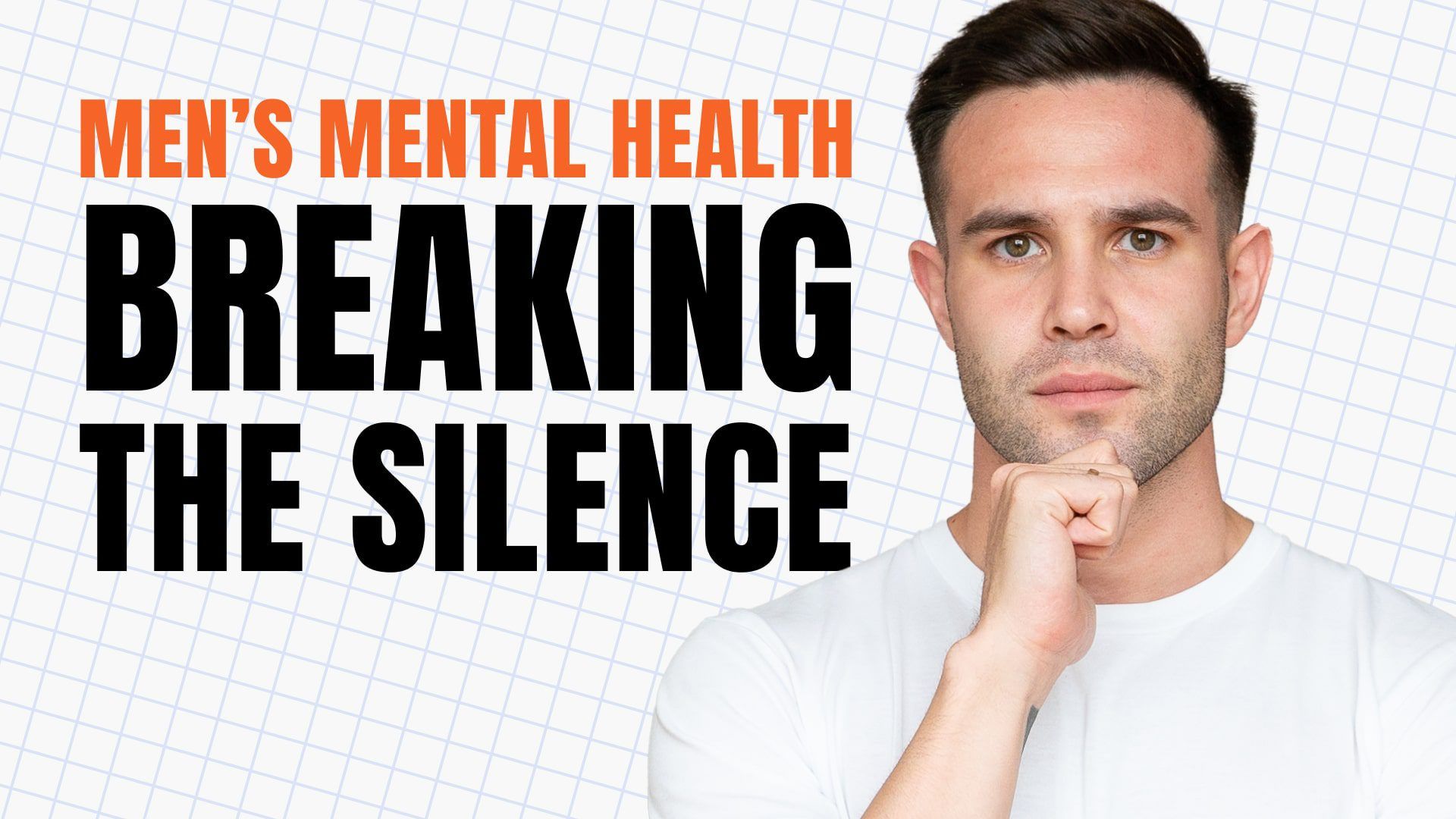
Calculate Your One Rep Max: 1RM Calculator + Complete Guide
Table of contents
In this article, you will learn…
In this article, you’ll discover how to calculate your one-rep max (1RM) – the maximum weight you can lift for a single repetition in any given exercise.
Understanding your 1RM is crucial for designing effective strength training programs, whether your goal is to build muscle, increase strength, or improve athletic performance.
This guide will explain how the 1RM calculator works, how to interpret your results, and the practical applications of knowing your 1RM in your fitness routine.
Key Takeaways
- The one-rep max (1RM) calculator estimates the maximum weight you can lift for one repetition, based on the weight you currently lift and the number of repetitions you perform.
- Knowing your 1RM helps you set appropriate lifting goals, design targeted strength training programs, and monitor your progress over time.
- The calculator uses established formulas to provide an accurate estimate of your 1RM, which can be applied to various exercises, including bench press, squats, and deadlifts.
- By understanding and utilizing your 1RM, you can optimize your workouts for specific goals, such as hypertrophy, strength, or endurance, ensuring that your training is both effective and safe.
How the One-Rep Max (1RM) Calculator Works
Key Metrics Used in the Calculator
The 1RM calculator uses two primary inputs to estimate your one-rep max:
- Lift Weight: This is the amount of weight you can currently lift for a specific number of repetitions. It can be entered in either kilograms or pounds, depending on your preference.
- Repetitions: This is the number of times you can lift the chosen weight before reaching failure. The calculator allows you to input any number of repetitions, from a single rep up to several dozen.
These inputs are combined using a formula that adjusts for the number of repetitions performed, providing an estimate of the maximum weight you could lift for one repetition.
Step-by-Step Calculation
Example Calculation Using the Epley Formula: Let’s say you can lift 100 kg for 5 repetitions on the bench press, and you want to estimate your one-rep max:
Input the Lift Weight and Repetitions: Enter 100 kg as the lift weight and 5 as the number of repetitions.
Apply the Epley Formula: The Epley formula is one of the most commonly used methods to estimate 1RM:
In this example, the calculation would be:
Your estimated one-rep max is approximately 116.67 kg.
Interpreting the Results: Once you have your 1RM, the calculator also provides the corresponding weight percentages for various repetition ranges. For example, 80% of your 1RM might correspond to a weight you can lift for 8-10 reps, while 60% might be suitable for 12-15 reps.
This process allows you to estimate your one-rep max and understand how different percentages of this max correspond to various training intensities and goals.
Interpreting Your One-Rep Max (1RM) Results
Understanding 1RM Percentages and Their Application
Once you’ve calculated your one-rep max (1RM), it’s important to understand how to use this information to structure your workouts effectively. Your 1RM provides a benchmark for determining the appropriate weight to lift for different training goals, such as strength, hypertrophy (muscle growth), and endurance. Here’s how the percentages of your 1RM translate into different training objectives:
- Strength Training (85-100% of 1RM): Training within 85-100% of your 1RM focuses on maximizing strength. Lifting near your 1RM requires fewer repetitions (usually 1-5 reps) and longer rest periods between sets to allow for full recovery. This range is ideal for powerlifters and those looking to increase their maximum strength.
- Hypertrophy Training (70-85% of 1RM): The 70-85% range of your 1RM is where hypertrophy, or muscle growth, is most effectively stimulated. This intensity typically allows for 6-12 repetitions per set. Training in this zone strikes a balance between lifting heavy enough to challenge your muscles and performing enough repetitions to induce muscle growth.
- Endurance Training (50-70% of 1RM): For muscular endurance, you’ll want to use 50-70% of your 1RM, which generally corresponds to higher repetitions (12-20+ reps). This range is useful for athletes who need to sustain prolonged efforts, such as runners or cyclists, and for those looking to increase muscle stamina.
By understanding these percentages, you can tailor your training program to meet your specific goals, ensuring that each workout is optimized for the desired outcome.
Benefits of Knowing Your 1RM
Calculating and knowing your 1RM offers several key benefits:
- Personalized Training Programs: Your 1RM provides a foundation for creating a personalized training program that aligns with your strength and fitness goals. By adjusting the percentage of your 1RM for different exercises, you can ensure that your workouts are appropriately challenging and effective.
- Progress Tracking: Regularly testing your 1RM allows you to track your strength progress over time. As your 1RM increases, it’s a clear indicator that your training is working, and it can motivate you to continue pushing your limits.
- Injury Prevention: Knowing your 1RM helps prevent injury by ensuring you’re lifting weights within your capacity. This is particularly important when attempting new exercises or pushing for higher intensities, as it reduces the risk of overloading your muscles and joints.
- Goal Setting: Your 1RM serves as a benchmark for setting realistic and achievable strength goals. Whether you’re aiming to increase your squat by 10% or improve your bench press, your 1RM provides a measurable starting point from which to progress.
The Limitations of the One-Rep Max Calculator
Estimations vs. Actual Testing
While the one-rep max calculator provides a convenient estimate of your 1RM, it’s important to recognize that this is an estimation based on formulas and may not always match the results of an actual 1RM test. Here are some considerations:
- Estimation Accuracy: The calculator uses established formulas, such as the Epley or Brzycki formula, to estimate your 1RM based on submaximal lifts (lifts that aren’t your maximum). While these formulas are generally accurate, they might not account for individual factors such as fatigue, technique, or psychological factors that can influence your actual 1RM.
- Variation in Repetition Ranges: The accuracy of the 1RM estimation can vary depending on the number of repetitions used to calculate it. For example, a calculation based on 1-5 reps is generally more accurate than one based on 10-12 reps. As the number of repetitions increases, the estimate becomes less precise due to greater variability in strength endurance among individuals.
- Actual 1RM Testing: For the most accurate determination of your 1RM, performing an actual 1RM test under controlled conditions is recommended. This involves gradually increasing the weight until you can only complete one repetition with proper form. However, this method carries a higher risk of injury and should be performed with caution, preferably under the supervision of a qualified trainer.
Factors Affecting 1RM Estimates
Several factors can influence the accuracy of your 1RM estimate:
- Exercise Type:
Different exercises have varying degrees of complexity and demand on the body. For example, estimating your 1RM for compound movements like squats or deadlifts may be less accurate compared to simpler exercises like bicep curls due to the involvement of multiple muscle groups and joints. - Experience Level:
Beginners may find that their 1RM estimates fluctuate more due to rapid strength gains and adaptation to new exercises. Experienced lifters, on the other hand, may have more consistent estimates, but slight inaccuracies can still occur due to factors like fatigue or changes in technique. - Physical and Mental State:
Your physical and mental state on the day of lifting can impact your performance and the accuracy of your 1RM estimate. Factors such as fatigue, stress, nutrition, and sleep can all influence your lifting capacity.
Given these limitations, it’s important to use the 1RM calculator as a guideline rather than a definitive measure.
For most lifters, it provides a solid foundation for structuring workouts, but it should be complemented with actual testing and personal judgment when determining appropriate lifting intensities.
FAQ
How accurate is the one-rep max calculator?
The one-rep max calculator is generally accurate for providing an estimate of your 1RM, especially when based on 1-5 repetitions.
However, it’s important to remember that it is an estimation, and factors such as fatigue, exercise type, and individual variability can affect the accuracy.
For the most precise measurement, consider performing an actual 1RM test under controlled conditions.
Can I use the calculator for any exercise?
Yes, the one-rep max calculator can be used for a wide range of exercises, including compound lifts like squats, bench presses, and deadlifts, as well as isolation exercises like bicep curls or tricep extensions.
However, the accuracy of the estimate may vary depending on the complexity of the exercise and the number of muscle groups involved.
How often should I recalculate my 1RM?
It’s a good idea to recalculate your 1RM every 4-6 weeks, especially if you’re following a structured training program designed to increase strength.
Regular recalculation allows you to adjust your training weights based on your progress and ensures that your workouts remain challenging and effective.
Is it safe to test my actual one-rep max?
Testing your actual 1RM can be safe if done correctly and under the supervision of a qualified trainer. It’s important to use proper technique, warm up thoroughly, and gradually increase the weight.
However, because of the higher risk of injury, especially for beginners, it’s recommended to rely on estimated 1RM for most training purposes.
How do I know if I’m ready to test my 1RM?
You’re likely ready to test your 1RM if you have a solid foundation of strength training experience, consistently use proper technique, and have no current injuries.
If you’re a beginner or returning to lifting after a break, it’s better to focus on building strength gradually and using the 1RM calculator for estimates rather than testing your max directly.
What’s the difference between the Epley and Brzycki formulas?
Both the Epley and Brzycki formulas are commonly used to estimate 1RM, but they have slight differences.
The Epley formula tends to be more accurate for those with higher repetition ranges (e.g., 5-10 reps), while the Brzycki formula is often preferred for lower repetition ranges (e.g., 1-5 reps).
Both formulas are reliable, and the choice between them depends on personal preference and the specific exercise.
Can I use my 1RM to improve my lifting technique?
Yes, knowing your 1RM can help you practice and refine your lifting technique at different intensities.
For example, you might use 50-60% of your 1RM to focus on form and technique with lighter weights, or 80-90% of your 1RM for more challenging sets that also emphasize technique under load.
How does body weight affect my 1RM?
Body weight can influence your 1RM, particularly in exercises like pull-ups, dips, or bodyweight squats.
Generally, increasing muscle mass and maintaining a healthy body weight can help improve your 1RM by providing more strength and power.
Conversely, significant weight gain, especially in fat, might reduce your relative strength in bodyweight exercises.
Should I adjust my 1RM based on my training goals?
Yes, your 1RM can be adjusted or used differently depending on your training goals. For strength gains, you might focus on lifting close to your 1RM with lower repetitions.
For hypertrophy, you might work with 70-85% of your 1RM for higher repetitions. For endurance, you might use 50-70% of your 1RM for even higher reps.
How do I avoid injury when lifting close to my 1RM?
To avoid injury when lifting close to your 1RM, ensure you use proper form, warm up thoroughly, and lift with control.
It’s also important to use spotters when necessary, especially for heavy lifts like bench presses or squats. Listening to your body and knowing when to stop is crucial to prevent overtraining and injuries.
Can beginners use the one-rep max calculator?
Yes, beginners can use the one-rep max calculator, but they should be cautious with the estimates and not attempt to lift their actual 1RM without proper guidance.
It’s better for beginners to focus on building a solid foundation of strength and technique before testing their 1RM.
How does fatigue affect my 1RM?
Fatigue can significantly affect your 1RM by reducing your lifting capacity. If you’re tired, your estimated 1RM might be lower than your actual potential.
It’s best to test or estimate your 1RM when you’re well-rested and properly fueled to get the most accurate result.
What’s the best way to warm up before testing my 1RM?
To warm up before testing your 1RM, start with light aerobic activity to increase your heart rate, followed by dynamic stretching to prepare your muscles and joints.
Then, perform several sets of the exercise you’re testing with gradually increasing weights and decreasing repetitions, stopping just short of your expected 1RM.
How do I use my 1RM to track progress?
You can track your progress by regularly recalculating your 1RM and comparing the results over time. Increasing your 1RM indicates strength gains and improvement in your lifting capacity.
It’s also helpful to note how your 1RM corresponds to different percentages and rep ranges, as this can show improvements in both strength and endurance.
Can I use my 1RM for exercises other than the bench press, squat, or deadlift?
Yes, you can use your 1RM for a wide variety of exercises, including overhead presses, rows, and isolation exercises like bicep curls or tricep extensions.
The key is to apply the same principles and formulas to estimate your 1RM, keeping in mind that the accuracy may vary depending on the complexity of the exercise.
Conclusion
This article provided a comprehensive guide on calculating and understanding your one-rep max (1RM), a key measure of strength in any exercise.
We covered the basic steps for estimating your 1RM using established formulas, interpreting the results to tailor your training, and understanding the benefits and limitations of the calculator.
We also explored how to apply your 1RM to different training goals, such as strength, hypertrophy, and endurance, and discussed best practices for avoiding injury and maximizing progress.
Final Thoughts
Knowing your 1RM is a powerful tool for anyone serious about strength training. It allows you to customize your workouts, track your progress, and push your limits safely and effectively.
Whether you’re a beginner or an experienced lifter, using your 1RM can help you achieve your fitness goals more efficiently.
For more tools, tips, and guidance on strength training, be sure to explore my blog and connect with me on social media, where I share the latest insights and strategies for getting stronger and staying healthy.
Works Cited and Relevant Links
- Epley, B. (1985). Poundage Chart. Lincoln, NE: Boyd Epley Workout.
- Baechle, T. R., & Earle, R. W. (2008). Essentials of Strength Training and Conditioning (3rd ed.). Human Kinetics.
- Brzycki, M. (1993). Strength Testing: Predicting a One-Rep Max from Reps-to-Fatigue. Journal of Physical Education, Recreation & Dance, 64(1), 88-90.
- Wathan, D. (1994). Load Assignment for Power. In Strength and Power in Sport (pp. 245-248). Blackwell Science.
- American Council on Exercise (ACE). (2020). Understanding Your One-Rep Max.
I am not a doctor, fitness coach, nutritionist, or trained health professional. The information I share is based on my personal experience, self-research, and insights from working with health and wellness professionals. My content is for informational and entertainment purposes only and is not intended as health advice.
Always consult with your healthcare provider before making any significant changes to your health routines or treatments. I am not liable for any actions taken based on this information.
Your well-being is my top priority. Stay healthy and take care!










Leave a Reply